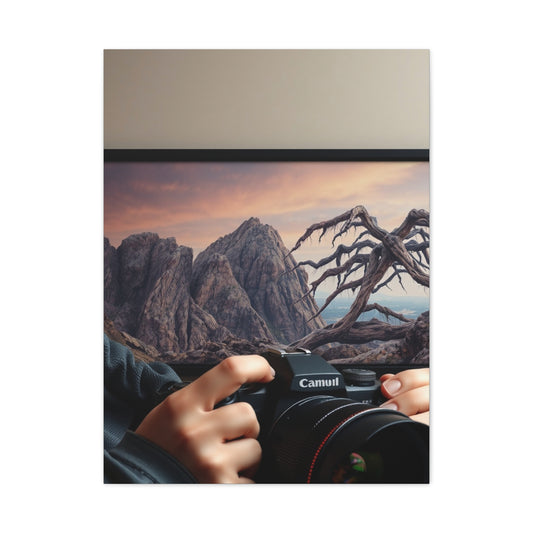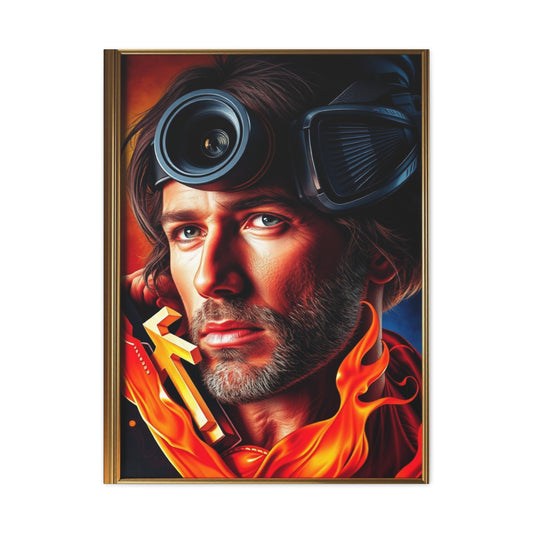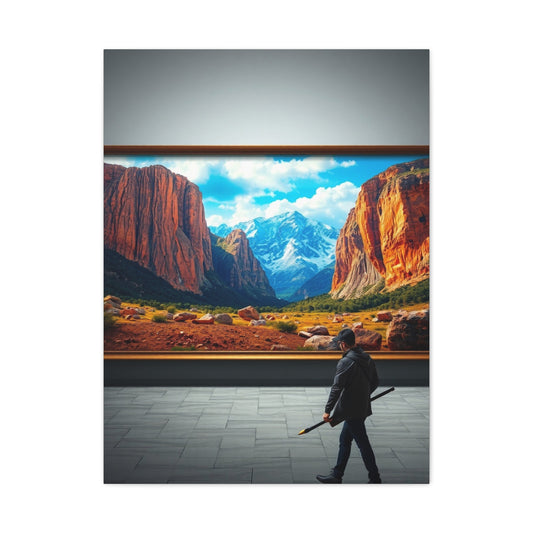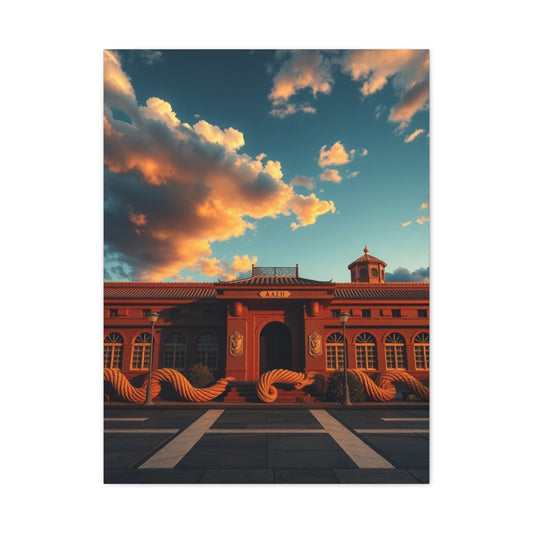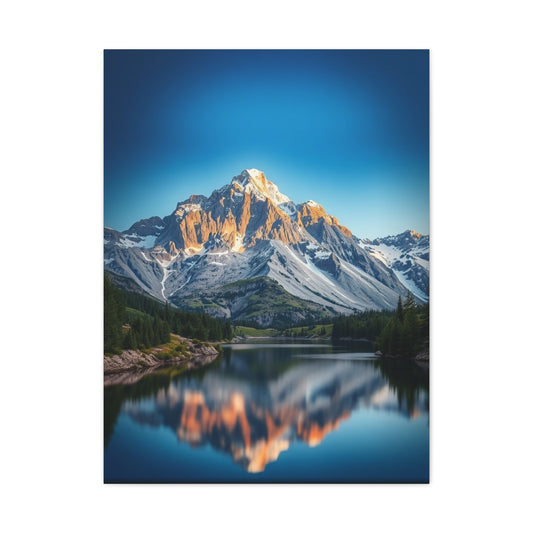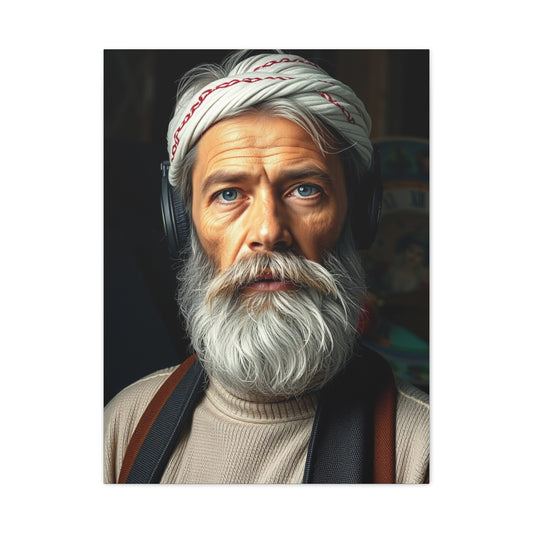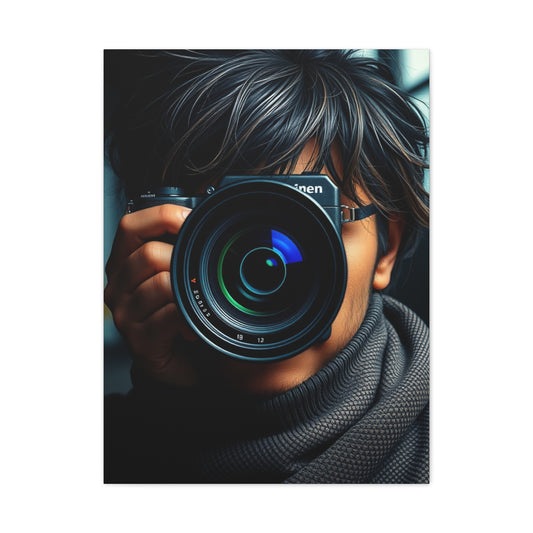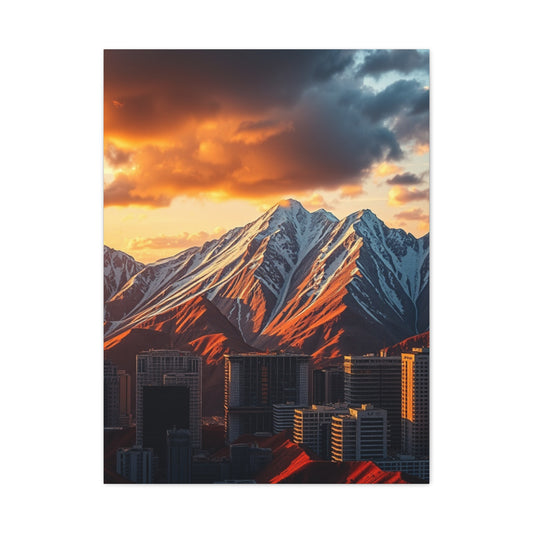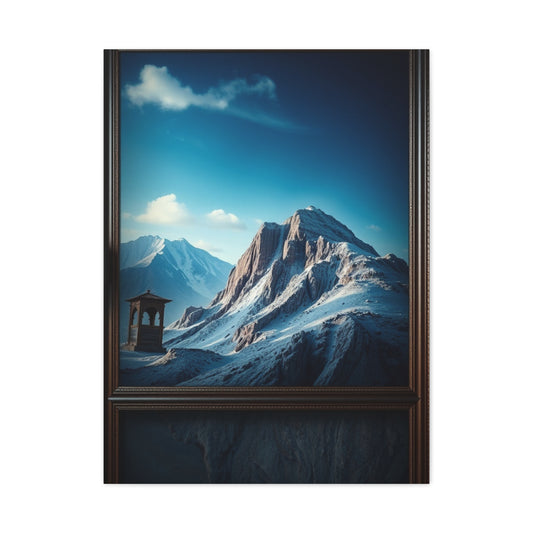Large Photography Wall Art That Speaks Volumes in Your Decor
Large photography wall art has emerged as one of the most compelling elements in contemporary interior design. The impact of a powerful photographic print is undeniable, as it transforms a wall into more than just a surface; it becomes a storytelling canvas. In homes, offices, and commercial settings, large-scale imagery can command attention, engage emotions, and redefine the overall mood of a space. Unlike smaller decorative pieces that may blend quietly into the background, oversized prints demand focus, acting as both a focal point and a conversation starter.
The allure of large photography prints lies in their ability to showcase minute details that are often lost in smaller reproductions. The fine texture of a mountain ridge, the rhythm of waves along a shoreline, or the stillness of a deserted street can be brought to life when presented on a scale that envelops the viewer. These pieces go beyond decoration and move into the realm of immersive experiences, allowing people to step momentarily into the world captured by the photographer. Whether it’s a sweeping panoramic landscape or an intimate portrait, photography wall art can transform blank walls into portals of imagination and reflection.
Today’s interiors often strive for a balance between personal expression and aesthetic sophistication, and large photography wall art delivers both effortlessly. For some, it is a chance to introduce the beauty of nature into a living room. For others, it may serve as a bold emblem of urban sophistication in a sleek office. The versatility of these prints makes them suitable for every type of environment, while their sheer presence elevates the visual atmosphere instantly.
Historical Background
Photography has always held a unique place in the arts, straddling the line between documentation and creative expression. When it first emerged in the 19th century, photographs were valued primarily for their ability to record reality with precision. Portrait studios thrived, families commissioned images, and landscapes were captured to document both scientific explorations and cultural moments. However, as photography developed as a medium, it gradually gained recognition as fine art in its own right. The shift from utility to artistry laid the groundwork for photography wall art to become a powerful force in design.
During the 20th century, large-scale photographic prints began to appear in galleries and exhibitions, pushing the boundaries of what photography could achieve. Artists such as Ansel Adams elevated landscape photography with grandiose depictions of mountains, forests, and rivers, often printed in larger formats that amplified their majesty. Similarly, urban photographers captured the bustle of cities, presenting their work in ways that celebrated architectural geometry and human energy. These exhibitions proved that large photography could not only capture reality but also create awe-inspiring visual experiences that rivaled painting and sculpture.
The evolution of printing technology played a crucial role in the growing popularity of oversized photography. With advancements in film quality, enlarging techniques, and later digital resolution, artists could reproduce images at massive scales without losing detail or clarity. This technological progress allowed photographers to bring their visions to life in formats that could dominate a room. By the late 20th century, collectors and designers began to embrace large prints as integral to both personal interiors and professional spaces.
Today, large photography wall art stands as a testament to the fusion of tradition and innovation. Rooted in the history of capturing moments in time, it now benefits from cutting-edge printing techniques, archival papers, and high-resolution digital photography. This combination ensures not only striking visual quality but also durability, allowing these artworks to become lasting investments for anyone seeking to enrich their surroundings.
Core Concepts and Foundations
The essence of large photography wall art lies in scale, presence, and storytelling. Unlike smaller decorative pieces that subtly complement an environment, oversized prints dominate space in a way that demands attention. The human eye is naturally drawn to large images, particularly when they contain striking contrasts, intricate details, or vibrant colors. This effect turns a simple wall into a stage for visual drama, reshaping how people perceive the entire room.
At the heart of this transformation is the concept of immersion. A large print allows viewers to lose themselves in the photograph, experiencing the textures, shadows, and compositions more intimately. The storytelling power of photography is magnified at this scale, as subtle details that might go unnoticed in smaller prints suddenly reveal themselves. This could be the faint lines of a subject’s expression, the shifting gradient of the sky during sunset, or the intricate design of an architectural facade.
Another foundational principle is the interplay between photography and interior design. Art has always influenced the ambiance of spaces, but large photography prints in particular can alter proportions, enhance depth, and guide the flow of movement within a room. For instance, a panoramic mountain scene can make a narrow space feel expansive, while a close-up portrait can create a sense of intimacy even in a grand hall. Designers and homeowners alike rely on this transformative capacity to curate spaces that evoke specific emotions or narratives.
Fine art photography also carries an element of exclusivity. Limited-edition prints provide a sense of rarity and individuality, making each piece more than just decoration—it becomes part of a personal collection. Collectors often seek works that resonate deeply, choosing prints that embody themes such as serenity, adventure, or resilience. When displayed prominently, these works reflect the personality of the owner while contributing to the aesthetic harmony of the environment.
Ultimately, the foundation of large photography wall art rests on three interconnected qualities: its scale, which commands attention; its depth, which invites immersion; and its meaning, which conveys a story beyond the surface. These elements make it more than a simple design choice—it becomes a bridge between art, memory, and emotion.
Types and Categories
Large photography wall art encompasses a wide spectrum of subjects and styles, each offering distinct emotional and visual experiences. The choice of category often depends on the atmosphere one wishes to create within a given space.
One of the most beloved types is landscape photography. Expansive mountain ranges, tranquil beaches, dense forests, and desert vistas all lend themselves beautifully to large formats. Landscapes provide a timeless quality, offering calmness, grandeur, or a sense of exploration. When displayed in oversized prints, they can transform living rooms, bedrooms, or offices into sanctuaries of natural beauty.
Urban and architectural photography offers a different kind of impact. Bold lines, geometric compositions, and dynamic cityscapes create an atmosphere of energy and modern sophistication. Large-scale city images often suit contemporary apartments, creative studios, or corporate environments where a sense of momentum and structure is desirable.
Portrait photography also thrives in large formats. Whether it is a powerful black-and-white study of a face, a candid capture of cultural life, or an abstract representation of human emotion, portraits connect directly with viewers. These works can bring intimacy to personal spaces or add gravitas to public areas.
Abstract photography is another compelling category for oversized prints. By focusing on textures, colors, and forms, abstract works blur the line between photography and painting. These pieces can act as bold artistic statements, infusing rooms with creativity and sparking curiosity.
Nature and wildlife photography carry their own resonance. Images of animals in their natural habitats, close-ups of flora, or macro details of natural elements offer both tranquility and fascination. Large prints in this category are ideal for spaces where inspiration and connection to the natural world are valued.
Each category holds the potential to evoke distinct emotions and redefine space. The key lies in aligning the subject matter with the environment, ensuring that the artwork complements both the physical dimensions of the room and the emotional tone desired.
Practical Applications
Large photography wall art is not confined to galleries or collectors’ homes. Its practical applications span a wide range of environments, making it one of the most versatile design elements available today.
In residential settings, oversized prints often serve as the centerpiece of living rooms, bedrooms, or dining areas. A single striking image above a sofa or bed can define the entire atmosphere of the space, making other decorative elements secondary. In open-concept homes, large prints can help delineate areas, offering subtle separation between spaces while maintaining cohesion.
Workspaces benefit significantly from the inclusion of photography wall art. Offices, conference rooms, and creative studios are increasingly incorporating large prints to inspire productivity, foster creativity, and improve overall ambiance. Images that reflect nature or abstract patterns can reduce stress and promote focus, while dynamic urban scenes may encourage innovation and forward-thinking.
In hospitality and commercial environments, large photography prints create memorable impressions for guests and clients. Hotels often use oversized artwork in lobbies, hallways, and suites to establish identity and atmosphere. Restaurants may employ evocative food or cultural imagery to enhance dining experiences. Even healthcare facilities use serene photographic scenes to create calming environments that promote well-being.
Practical considerations also play an important role. Proper framing, lighting, and placement are essential to maximize the effect of large prints. For example, illuminating a photograph with well-placed spotlights can highlight its textures and colors, while thoughtful placement ensures it becomes a natural focal point rather than an overwhelming distraction. High-quality materials, such as archival paper, canvas, or acrylic, ensure that the print maintains its vibrancy over time.
In every application, the versatility of large photography wall art lies in its ability to adapt. It can be calming or energizing, minimal or elaborate, timeless or avant-garde. Above all, it brings depth and presence to spaces that might otherwise feel ordinary, transforming them into meaningful environments that resonate with those who inhabit them.
Techniques and Methods
Creating impactful large photography wall art involves more than simply enlarging an image and placing it on a wall. The process requires thoughtful techniques, meticulous attention to detail, and a strong awareness of how composition, printing, and display interact.
One fundamental method is the careful selection of subject matter. Not every photograph works well in oversized formats. Images that rely on fine textures, sweeping landscapes, or strong compositional lines tend to translate more effectively when enlarged. A photograph with blurred focus or insufficient resolution may lose its clarity when scaled up, whereas a high-resolution image with crisp lines will maintain its quality and depth.
Another technique lies in mastering the principles of composition. Leading lines, symmetry, and balanced proportions are essential to ensure the artwork resonates when viewed from both near and far. A panoramic shot of a mountain range may draw the eye across the frame, while a close-up portrait can evoke intimacy even when printed several feet wide. The success of large photography wall art often rests on whether the composition can sustain viewer interest on multiple scales.
The printing process is equally crucial. Modern printing technologies, such as giclée or dye-sublimation on metal and acrylic, allow for exceptional detail and color vibrancy. Choosing the right material for the print can dramatically alter its impact. Canvas, with its textured surface, imparts a painterly feel, softening sharp lines and lending warmth to the piece. Acrylic, on the other hand, enhances sharpness and depth, giving photographs a luminous, almost three-dimensional effect. Metal prints bring a contemporary sheen, ideal for urban and architectural photography.
Mounting and framing methods also play a decisive role. A floating frame can provide subtle sophistication, while bold wooden frames ground the image with strength and tradition. Frameless options, such as edge-to-edge acrylic mounts, lend a sleek and modern look. The choice depends on both the artwork itself and the design style of the room it inhabits.
Lighting techniques complete the presentation. Without proper illumination, even the most striking photograph can fade into obscurity. Adjustable track lighting or carefully positioned spotlights can highlight key details, while natural light can enhance textures and colors during the day. However, care must be taken to avoid glare or fading caused by direct sunlight.
Finally, the method of placement should not be overlooked. Centering a large photograph on a prominent wall creates a bold focal point, while grouping multiple oversized prints along a corridor generates a gallery-like experience. The positioning should always take into account the furniture, architectural features, and natural flow of the room to ensure harmony between the artwork and its surroundings.
Challenges and Common Mistakes
Despite the allure of large photography wall art, there are common pitfalls that can diminish its effectiveness. Understanding these challenges helps avoid mistakes and ensures that the artwork achieves its intended impact.
One frequent mistake is disregarding scale. While large prints are meant to dominate a wall, they must still harmonize with the dimensions of the room. A photograph that is too small for a vast wall may appear insignificant, while an oversized print in a cramped area can feel overwhelming. Proportion is key, and careful measurement before selection ensures balance.
Another challenge arises with image resolution. Attempting to enlarge a photograph beyond its quality threshold can result in pixelation or blurriness, detracting from the intended clarity and impact. High-resolution files are essential for large prints, and investing in professional-grade photography or fine art editions prevents this common misstep.
Color and tone also present difficulties. A photograph with overly saturated colors might clash with the room’s palette, while one with muted tones may appear washed out against vibrant interiors. Considering the interplay between the image and the surrounding decor avoids visual dissonance. Similarly, ignoring lighting conditions can lead to problems. An image that looks striking in daylight might lose depth under dim artificial lighting if illumination is not properly planned.
Improper framing or mounting can further undermine the effect. A heavy frame may overshadow a delicate photograph, while a thin or poorly chosen frame may fail to provide the necessary support. Skipping professional framing services often results in warping, misalignment, or damage over time.
Another common mistake is overcrowding. While hallways and expansive walls lend themselves to multiple large prints, placing too many oversized artworks in one room can create visual chaos. Each piece needs breathing space to be appreciated, and restraint often enhances impact more than excess.
Placement errors also occur frequently. Hanging artwork too high or too low disrupts the natural line of sight. A general rule is to position the center of the image at eye level, creating an intuitive viewing experience. Ignoring the relationship between the artwork and furniture below it can also cause an imbalance. For example, a print that dwarfs a small side table may look disproportionate, while a photograph hung too far above a sofa may appear disconnected from the rest of the room.
Finally, neglecting the emotional resonance of the photograph is a subtle but serious mistake. Large photography wall art is not merely decorative; it conveys a mood and tells a story. Choosing an image that does not align with the atmosphere of the space or the personality of its occupants can result in a disconnect. A serene seascape may feel out of place in a bustling corporate office, while an edgy urban scene might clash with a cozy family living room.
Trends and Future Outlook
The world of large photography wall art continues to evolve, influenced by cultural shifts, technological innovation, and design trends. One of the most significant developments has been the rise of sustainability in art production. Collectors and homeowners increasingly seek eco-friendly materials, such as recycled papers, non-toxic inks, and sustainably sourced frames. This trend aligns with the broader movement toward conscious living and responsible design.
Another growing trend is personalization. Advances in digital printing allow for custom sizes, finishes, and even entirely commissioned works. Homeowners now desire pieces that reflect their personal experiences, whether it is a landscape from a favorite travel destination or a city skyline that holds sentimental value. This drive toward individual expression ensures that photography wall art is not only decorative but also deeply personal.
Minimalism continues to influence design, with monochrome photography and simple compositions dominating many interiors. Black and white prints, in particular, retain a timeless appeal, complementing both traditional and modern spaces. At the same time, maximalist trends are emerging, with bold, colorful prints that embrace vibrancy and energy. This duality highlights the adaptability of photography wall art across diverse design philosophies.
Technological innovation shapes the future as well. Ultra-high-resolution cameras, drones, and advanced editing software have expanded the possibilities for capturing and producing striking images. Photographers can now create immersive panoramic views, surreal composite works, and perspectives previously unattainable. Printing techniques are also advancing, with innovations like 3D textures, metallic inks, and augmented reality integration, allowing viewers to engage with artwork in interactive ways.
Another significant trend is the blending of photography with other art forms. Artists are experimenting with mixed media, combining photographs with painting, digital illustration, or sculptural elements. These hybrid works blur boundaries and create unique, large-scale pieces that resonate with contemporary audiences seeking originality.
Looking ahead, the role of large photography wall art in shaping emotional well-being is expected to grow. As more people prioritize wellness in their living and working spaces, calming imagery such as seascapes, forests, and skies will gain popularity. At the same time, bold, thought-provoking works will remain in demand for those seeking stimulation and creative energy. The balance between serenity and dynamism will continue to define the market.
Global accessibility is another future outlook. Online galleries and digital platforms have made it easier than ever to explore and purchase fine art photography from around the world. This democratization of access broadens the audience for large photography prints, ensuring that people from diverse regions and backgrounds can incorporate them into their spaces.
Expert Insights
Professionals in photography and design consistently emphasize the importance of intentionality when incorporating large photography wall art into interiors. Experienced photographers often stress that oversized prints require a distinct mindset during the shooting process. The framing, resolution, and subject matter must all anticipate the possibility of enlargement, ensuring that the final print maintains integrity and emotional resonance.
Interior designers highlight the psychological impact of large artwork. They explain that the right image can alter mood, enhance productivity, or create a sense of calm depending on its subject and placement. For example, a designer might recommend a serene ocean scene for a bedroom to promote relaxation, while suggesting dynamic architectural imagery for a modern office to inspire focus and innovation. Their advice often underscores the balance between personal taste and design principles.
Framing experts note that the frame is not merely an accessory but an extension of the artwork itself. A carefully chosen frame protects the photograph while enhancing its visual presence. They advise clients to view framing as a long-term investment that preserves both aesthetic quality and structural stability.
Curators and gallery professionals emphasize the cultural significance of large photography. They describe it as a bridge between fine art and accessibility, offering museum-quality experiences in private homes. Their insights highlight the importance of selecting works that not only please the eye but also connect with broader narratives of history, environment, or identity.
Photographers themselves often encourage collectors to embrace limited editions. Limited runs increase the value and exclusivity of prints while supporting artists in continuing their creative work. Experts argue that owning a limited-edition photograph is not just about decorating a wall; it is about participating in the preservation and appreciation of artistic vision.
Technology specialists in the field of digital printing provide additional perspectives. They explain how innovations in ink technology, color calibration, and substrate materials are pushing the boundaries of what is possible. Their insights reveal how large prints can achieve levels of vibrancy, detail, and durability that were unimaginable even a decade ago.
Ultimately, the consensus among experts is clear: large photography wall art is more than decoration. It is an artistic investment, a design choice, and an emotional catalyst. By approaching it with intentionality, respect for craftsmanship, and alignment with personal values, individuals can ensure that their chosen artworks remain timeless elements of their spaces.
Emerging Trends in Wall Art
The world of wall art has never been static; it reflects cultural changes, technological advances, and shifting aesthetic preferences. Large photography wall art, in particular, has evolved to embrace contemporary sensibilities, mirroring broader movements in art and design. Understanding emerging trends provides both collectors and decorators with insight into how this medium continues to transform spaces.
One of the most significant trends is the movement toward immersive visual storytelling. Oversized photographic prints no longer function merely as decorative accents but as environments in themselves. Panoramic scenes, captured with precision, are being installed in ways that envelop viewers, making them feel as though they are stepping directly into the landscape or urban setting. This immersive quality blurs the line between art and experience, redefining what it means to engage with photography.
Sustainability has also become a cornerstone of contemporary wall art. Artists and printers increasingly adopt eco-friendly practices, using archival-quality, acid-free papers and non-toxic inks. Frames crafted from reclaimed wood or sustainable composites appeal to environmentally conscious homeowners. This shift represents not only a trend but also a larger societal demand for responsible consumption, where the beauty of art does not come at the expense of the planet.
Minimalist aesthetics continue to hold a strong influence. Black and white photography, especially in large formats, remains timeless in its appeal. Its restraint and clarity suit modern interiors, where simplicity is valued. Conversely, maximalist tendencies have also gained momentum. Bright, bold images filled with vibrant colors and striking contrasts resonate with those who wish to infuse their interiors with energy and dramatic flair. The coexistence of these opposing styles demonstrates the versatility of large photography wall art in serving diverse tastes.
Technology has expanded the possibilities of photography, ushering in new creative directions. Drone photography, for instance, has unlocked aerial perspectives that were once reserved for specialists. Sweeping bird’s-eye views of coastlines, cities, and forests create breathtaking compositions well-suited for oversized prints. Digital manipulation also plays an increasing role, with artists blending realism and abstraction to produce surreal works that stretch the imagination.
Personalization is another rising trend. With advancements in digital printing, individuals now commission custom artworks tailored to their own memories and preferences. Travelers may choose to immortalize a cherished destination in a large print, while families may request fine art versions of personal portraits. This demand for individual expression reflects a broader cultural emphasis on uniqueness and identity.
Hybrid works combining photography with other media are gaining prominence as well. Artists incorporate painting, illustration, or even sculptural elements into photographic compositions, creating layered artworks that feel both traditional and modern. These experimental approaches broaden the scope of what photography can be, appealing to collectors who value originality.
Finally, the role of wall art in wellness-focused design is expanding. Photographs of serene landscapes, ocean horizons, and tranquil skies are increasingly used in spaces designed for rest and meditation. Such imagery aligns with the global movement toward mindfulness and self-care, highlighting how photography can contribute to emotional well-being as much as aesthetic beauty.
Step-by-Step Guides
Incorporating large photography wall art into a space requires careful consideration and deliberate action. A structured approach ensures that the artwork enhances the room rather than simply filling a blank wall. The following step-by-step guide offers a practical framework for making informed choices.
The first step is to define the purpose of the artwork. Before selecting a piece, reflect on the atmosphere you wish to create. Is the goal to inspire energy, evoke calm, or spark conversation? Understanding the emotional objective guides the selection of subject matter, whether it is a vivid cityscape, a tranquil seascape, or an abstract composition.
The second step involves measuring and evaluating the space. Accurate measurements of wall dimensions ensure that the scale of the artwork fits harmoniously with the room. Consider the height of ceilings, the arrangement of furniture, and the overall proportions of the space. A large print should dominate without overwhelming, striking a balance between boldness and integration.
Next, select the photograph itself. Choose images that resonate personally while aligning with the intended mood of the room. Pay attention to color palettes and how they interact with existing decor. For instance, a monochrome image might harmonize with minimalist interiors, while a saturated landscape could provide contrast in a neutral setting.
Once the image is chosen, the fourth step is to determine the material and finish. Canvas offers a soft, textured effect that feels warm and inviting. Acrylic prints produce sharp, luminous images with depth, ideal for modern spaces. Metal adds a sleek, reflective quality suited for industrial or urban themes. Each medium alters the perception of the photograph, so it is essential to match the material with both the subject and the room’s character.
The fifth step is framing. Consider frames not as afterthoughts but as integral components of the artwork. A floating frame creates subtle elegance, while rustic wood frames enhance natural landscapes. For contemporary interiors, frameless options provide clean lines and modern appeal. Choose frames that complement rather than compete with the image.
The sixth step is planning lighting. Illumination can make or break the presentation of large photography wall art. Position spotlights or adjustable track lighting to highlight key details. Avoid glare from direct sunlight by using UV-protective glazing if necessary. Soft, ambient lighting can enhance warm tones, while brighter, focused lighting brings out detail and vibrancy.
The seventh step involves placement and installation. The general rule is to position the center of the artwork at eye level. For pieces hung above furniture, ensure the spacing feels proportionate and connected. In hallways or larger walls, consider grouping multiple oversized prints to create a gallery-like effect. Secure mounting hardware is vital for safety and stability.
The eighth step is integrating the artwork into the broader design scheme. Complementary accents such as throw pillows, rugs, or smaller artworks can echo the tones and themes of the photograph. This integration ensures the artwork feels like part of a cohesive environment rather than an isolated statement.
The final step is curation over time. Large photography wall art should not remain static. Rotate pieces periodically to refresh the atmosphere and prevent visual fatigue. Collecting additional works allows for seasonal or thematic shifts, keeping the space dynamic and engaging.
Through this deliberate process, wall art evolves from simple decoration into a thoughtfully curated element of design. Each step ensures that the artwork fulfills its potential as both a personal expression and an aesthetic anchor.
Challenges in Incorporating Large Photography Wall Art
Despite its undeniable power to transform interiors, large photography wall art comes with its own set of challenges. The first and most frequent difficulty lies in scale management. Oversized artworks command presence, but when chosen without careful regard for dimensions, they can disrupt the balance of a room. A print that is too small may appear insignificant, while one that is too large can dominate to the point of suffocating the space. Ensuring harmony between the proportions of the wall, the furniture, and the artwork requires precise planning and foresight.
Another challenge is the selection of subject matter. Photography is vast in scope, ranging from serene landscapes to abstract explorations. Choosing imagery that does not align with the intended mood of the environment can lead to visual dissonance. For instance, an intense urban cityscape in a restful bedroom may feel discordant, just as a tranquil seascape may not fully resonate in a corporate boardroom seeking dynamism. The challenge lies in curating photographs that not only appeal aesthetically but also harmonize with the function and emotional tone of the space.
Budgetary concerns also play a role. High-quality large photography prints, particularly limited editions or works by renowned artists, represent a significant investment. Collectors must balance their appreciation for fine art with practical considerations of affordability. Choosing between original limited editions and high-quality reproductions requires careful judgment to achieve both authenticity and financial feasibility.
Installation presents another layer of complexity. Large prints are heavy, fragile, and often unwieldy. Proper mounting systems are essential to ensure both safety and aesthetic presentation. Misaligned installations, insufficient supports, or exposure to harsh environmental conditions such as humidity or direct sunlight can damage artworks over time. This makes professional framing and installation not only advisable but often necessary.
The emotional dimension of art can also pose challenges. Large photography wall art carries strong visual narratives, and these stories may not resonate equally with all members of a household or visitors in a commercial space. Balancing personal expression with broader acceptance can sometimes be a delicate negotiation.
Finally, the longevity of the artwork must be considered. Photographic prints are susceptible to fading if not produced with archival-quality materials or displayed under proper conditions. Collectors face the ongoing responsibility of maintaining their artworks, including considerations of humidity control, protective glazing, and periodic cleaning. These practical concerns underline the importance of choosing quality and durability from the outset.
Future Outlook of Large Photography Wall Art
Looking ahead, the role of photography in interior design and cultural expression is poised to expand further. One major factor influencing the future is technological innovation. Ultra-high-resolution cameras, virtual reality integration, and advanced editing software are revolutionizing what photographers can achieve. The rise of immersive panoramic captures and hybrid digital-analog techniques suggests that future wall art will blur the line between image and environment, offering viewers interactive and multi-dimensional experiences.
Sustainability will also continue shaping the trajectory of this art form. As awareness of environmental impact grows, the demand for sustainable materials and processes will increase. Photographers and printers are already experimenting with biodegradable substrates, eco-friendly inks, and sustainable framing solutions. The future promises even more emphasis on art that respects ecological values while maintaining visual excellence.
Personalization is another frontier. Advances in artificial intelligence and digital customization will allow homeowners to design entirely bespoke artworks that incorporate their personal experiences and preferences. Whether it is transforming a travel photograph into a fine art edition or integrating personal symbolism into abstract compositions, customization will make wall art more intimate and meaningful.
Global accessibility will also expand. Online platforms already connect photographers with collectors around the world, but as digital galleries become increasingly sophisticated, audiences will gain access to curated collections without geographical boundaries. This democratization of access ensures that fine art photography reaches a broader spectrum of individuals, fostering cultural exchange and artistic appreciation across continents.
The psychological role of photography in design is expected to deepen. As societies place greater emphasis on well-being, mindfulness, and emotional health, art will be chosen not merely for decoration but for its therapeutic qualities. Large photography wall art depicting tranquil oceans, expansive skies, or verdant forests will become central to spaces designed for rest, meditation, or healing. Conversely, bold and vibrant works will continue to energize workplaces and public environments, enhancing creativity and innovation.
The fusion of media also holds a promising future. Already, artists experiment with mixed media approaches, combining photography with painting, sculpture, or digital projections. As this trend develops, walls may host artworks that evolve dynamically, responding to lighting changes or even viewer interaction. These innovations expand the definition of photography, moving it beyond a static image into the realm of living art.
Finally, the cultural relevance of photography will grow as it documents pressing global issues. Large-scale photographic prints capturing environmental changes, social movements, or cultural identities will resonate deeply as both art and testimony. Collectors and institutions will value these works not only for their visual power but also for their historical significance, ensuring photography continues to bridge personal expression with collective memory.
Expert Perspectives on the Evolution of Wall Art
Experts in design, curation, and photography provide valuable insights into how large photography wall art is evolving. Interior designers emphasize the transformative role of oversized prints in shaping spatial perception. They observe that such artworks can redefine proportions, making small rooms appear expansive or adding intimacy to cavernous halls. Designers consistently advocate for intentional placement, viewing large prints as architectural elements rather than secondary embellishments.
Photographers, meanwhile, highlight the creative opportunities offered by scale. Shooting with the knowledge that images will be printed large requires meticulous planning of resolution, composition, and lighting. They view oversized prints as the ultimate test of a photograph’s strength, since every detail becomes visible to the viewer. Many contemporary photographers embrace this challenge, using large formats to push the boundaries of visual storytelling.
Curators and art historians frame photography as a democratic medium that combines accessibility with artistic depth. They note that photography’s ability to capture lived experience, combined with its adaptability to modern printing technologies, ensures its enduring relevance. For curators, large photography wall art is not just a design choice but part of an ongoing cultural dialogue about perception, memory, and identity.
Framing and conservation specialists add another perspective, underscoring the importance of long-term care. They explain that proper framing and display protect artworks from environmental damage, ensuring that pieces remain vibrant across decades. Their expertise reveals the hidden craft that supports the visible beauty of large photography prints.
Finally, collectors offer a personal dimension to these insights. Many describe their acquisitions as more than decorative investments, framing them instead as intimate relationships with images that speak to their histories, passions, and values. Their testimonies underscore that large photography wall art resonates most deeply when it becomes part of the emotional fabric of a home or institution.
Conclusion
Large photography wall art occupies a unique position at the intersection of aesthetics, personal expression, and cultural significance. Its scale transforms blank surfaces into immersive environments, commanding attention while shaping the mood of entire spaces. Through its power to capture detail, evoke emotion, and tell stories, photography has become one of the most dynamic and versatile forms of wall art available today.
The journey of photography from simple documentation to fine art reflects centuries of innovation and creative exploration. Today, oversized prints represent not only technical mastery but also artistic ambition, as they magnify the narrative power of the medium. By embracing careful selection, professional framing, and intentional placement, individuals can ensure that these works achieve their full potential as focal points of design.
Challenges remain, from navigating scale and subject matter to ensuring long-term preservation. Yet these obstacles are balanced by extraordinary opportunities. Emerging trends promise sustainability, personalization, and technological integration, ensuring that large photography wall art remains relevant in an ever-changing cultural landscape. Expert insights further reveal its capacity to influence perception, enhance well-being, and connect individuals with both personal memories and global narratives.
Ultimately, large photography wall art is far more than a decorative element. It is a conversation between artist and viewer, between space and inhabitant. It embodies the ability of art to enrich everyday life, to transform ordinary walls into extraordinary canvases of imagination. As technology advances, tastes evolve, and cultures intersect, this form of artistic expression will continue to inspire, captivate, and define the environments we inhabit.

